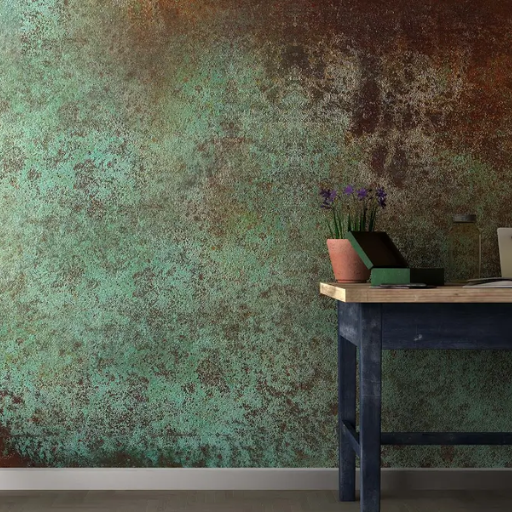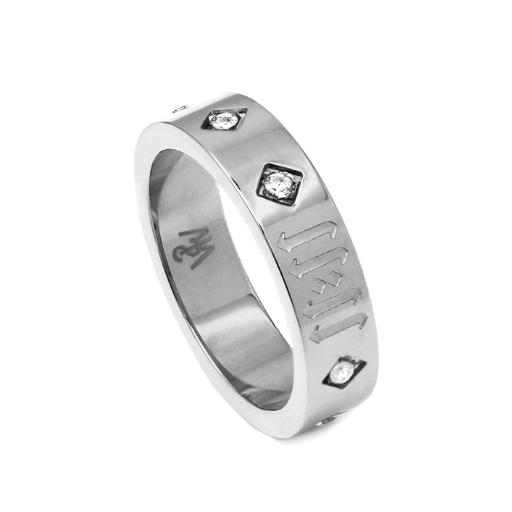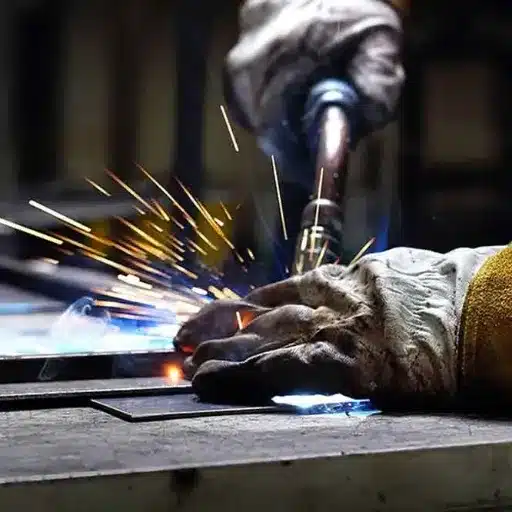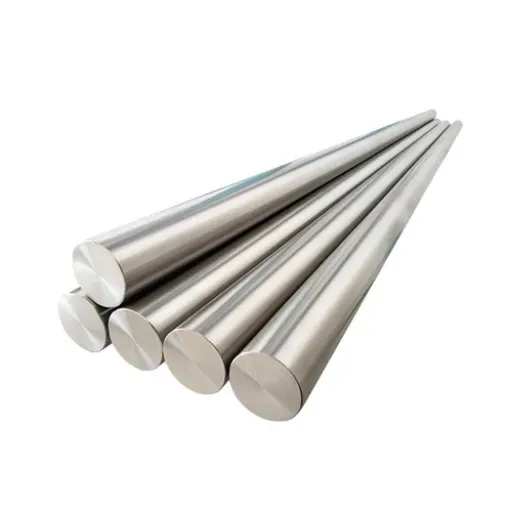Stainless steel is one of the most flexible materials used in modern life because of its shininess, luster, durability, and resistance to skin surface breakdown. It can be used in everything from kitchen appliances to construction materials. However, a stained steel surface getting a greenish tint may leave you puzzled. If you are wondering why there is a greenish tint to your stainless steel surfaces, we have you covered. Rapid Рepidermis change is a puzzling event for many people, which suggests poor maintenance, lack of care, or even worse, a sign of breakdown or decay. In this article, we aim to analyze the reasons for the greenish tint on stainless steel and the most crucial steps that can be executed to prevent further contamination. We seek to help you tackle the challenge irrespective of whether you are a homemaker, an industry professional, or someone inquisitive. After reading this article, you will have information that will enable you to prevent discoloration of your stainless steel appliances.
Why Does Stainless Steel Turn Green?

Exposing stainless steel to chlorides or sulfides in water or air during patina formation transforms it into a green hue. While stainless steel possesses considerable corrosion resistance, poor maintenance, harsh conditions, or damage to the protective chromium oxide layer may result in green tarnishing. Reducing exposure to corrosive elements and maintaining hygiene will mitigate surface tarnishing.
Understanding the Composition of Stainless Steel
Steel that contains chromium, carbon, iron, molybdenum, and manganese in varying amounts is called stainless steel. Stainless steel’s notable feature is its resistance to corrosion and damage. This is achieved through the 10.5% or higher chromium content. It acts as armor by forming a protective oxide layer, providing resistance against corrosion and preserving the steel’s durability.
We have five categories of stainless steel classified based on their crystalline structure: austenitic, ferritic, martensitic, duplex, and precipitation-hardening stainless steels. The most common stainless steels are austenitic ones, such as 304 and 316 grades, which are manufactured in excess of 70% of global production due to their unrivaled corrosion resistance and versatile applications.
Below is the table of common elements in stainless steel and their approximate contribution:
| Element | Typical Percentage | Role and Purpose |
|---|---|---|
| Chromium (Cr) | 5%–30% | Enhances corrosion resistance and hardness |
| Nickel (Ni) | Up to 10%–14% | Improves toughness, ductility, and enhances corrosion resistance |
| Molybdenum (Mo) | 2%–3% (in some grades) | Strengthens resistance to pitting in chloride-rich environments |
| Carbon (C) | Less than 1% | Increases hardness but may reduce corrosion resistance |
| Manganese (Mn) | 1%–2% | Enhances strength and wear resistance |
| Iron (Fe) | Remainder | Base metal providing structural strength |
Metallurgy has made strides more recently with custom stainless steel formulations such as super austenitic and super duplex stainless steel designed for extreme environments like chemical plants or offshore oil rigs. Overall, there is continuous growth globally for the demand of stainless steel. The market is estimated to be over 50 million metric tons produced annually throughout 2023, showcasing its use in construction, medical tools, food processing, and even aerospace engineering.
Achieving the best performance, durability, and cost efficiency with minimal environmental impact through reusable components and recycling requires precise customization of the stainless steel design.
The Role of Chromium and Nickel in Discoloration
| Element | Role in Discoloration | Key Mechanisms | Impact |
|---|---|---|---|
| Chromium | Causes pigmentation and skin aging | Oxidative stress and reactive oxygen species | Leads to hyperpigmentation and skin damage |
| Nickel | Induces color changes in materials and skin | Gas chromism and allergic reactions | Causes darkening in materials and skin rashes |
How Oxidation Leads to a Green Color
The green hues noted on the surfaces of metals such as stainless steel are typically caused by oxidation processes. It results from an activity involving some compounds formed due to exposure to specific environmental conditions. Below are five such activities that contribute to the green discoloration.
- Formation of chromium oxide
Stainless steel contains chromium, which protects against corrosion. However, in specific chromium-containing materials, the presence of oxygen in the air or water can lead to the formation of a thin layer of chromium oxide. Though the layer serves as a barrier, it can lead to a greenish stain based on the alloy composition under certain conditions.
- Nickel-based reaction products
Having nickel in the compound can lead to a reaction with carbonic acid and environmental factors. Thus, when alloys present in the compound, such as Nickel, become part of the environment, they can react with carbon dioxide and moisture. This interaction can cause deposits or corrosion byproducts that, due to light’s interaction with the surface, shine bright green.
- Prolonged exposure to saline or chloride-rich regions
Stainless steel exposed to salt water or high chloride environments will most likely have green staining. Chlorides are known to help in pitting or deep cut corrosions, where localized areas containing compounds such as Nickel, Chloride or Copper Uranium in Copper alloys with plenty slit seem to green.
- Interaction with Sulfur and Sulphides
Sulfur-containing sulfides, like those in industrial zones emitting sulfur dioxide, can aid in the chrome tarnished greenish stain. Chromium sulfide and Nickel sulfide may deposit on the metal surface, affecting its look.
- Oxidation at Elevated Temperatures
High-temperature welding and industrial heat treatments accelerate oxidation. Various heat scales and oxide layers of mixed constituents, including green chromates and other oxides, are likely to form and cause additional color change to the metal’s surface.
These factors should be understood for industries that heavily rely on stainless steel. Controlling exposure conditions with alloy composition helps address the issues of appearance deterioration and performance attenuation.
Is Stainless Steel Jewelry Likely to Turn Skin Green?

When considering accessorizing, jewelry made out of stainless steel is a popular option because it is durable, affordable, and looks good. Stainless steel jewelry has many advantages, but one common question is whether it can cause some form of discoloration on the skin, like the infamous green tint associated with other metals. In this blog post, we will analyze the science of metallic reactions, the factors that may influence such unattractive skin changes, and whether stainless steel is an option you can take your chances with. By the end, you will know how stainless steel reacts with elements of your body, and learn some tips that will aid you in decision-making the next time you go jewelry shopping.
Common Causes of Skin Discoloration
Discoloration of the skin refers to the mixture of natural skin oils, acids, sweat, and the chemical composition of the metal used. If tarnishing or corrosion occurs, then this could mean that skin discoloration is possible.
Factors that Cause Skin to Turn Green
The mix of metals the object is made of is a reason why someone’s skin may have a slight green tint. Certain sweat and skin oils can react with copper to form copper salts, leaving residue on the skin. This harmless reaction relies greatly on the chemistry of the individual, the surrounding conditions, and the duration of the jewelry’s wear.
Comparing Sterling Silver and Other Metals
| Parameter | Stainless Steel | Sterling Silver | Other Metals |
|---|---|---|---|
| Durability | Highly durable, scratch-resistant | Softer, prone to scratches | Varies: Carbon steel strong, aluminum soft |
| Corrosion Resistance | Excellent, resists rust and tarnish | Tarnishes easily, needs maintenance | Varies: Aluminum resists, carbon steel rusts |
| Weight | Heavier | Lightweight | Aluminum light, carbon steel heavy |
| Cost | Affordable, low maintenance | Higher, precious metal | Varies: Aluminum cheaper, titanium costly |
| Aesthetic Appeal | Sleek, modern shine | Warm, elegant luster | Varies: Copper shiny, carbon steel plain |
| Applications | Everyday, industrial, marine use | Jewelry, heirlooms | Aerospace (aluminum), electrical (copper) |
| Maintenance | Minimal cleaning required | Regular polishing needed | Varies: Aluminum low, carbon steel high |
| Hypoallergenic | Often hypoallergenic | May cause allergies | Varies by metal composition |
How to Prevent Stainless Steel from Turning Green

To prevent stainless steel from changing color, minimize moisture and chemical exposure to the jewelry. Stainless steel requires gentle cleaning using soap and water. After cleaning, the stainless steel surface should be dried thoroughly to prevent residue accumulation. Do not use stainless steel jewelry while showering, swimming in pools, or applying lotions and perfumes. Applying thin layers of clear nail polish or a jewelry sealant can limit skin contact, thus preventing the jewelry from tarnishing.
Maintaining the Protective Oxide Layer
As in every aspect of life, stainless steel jewelry also needs a protective layer. Wearing stainless steel jewelry is more convenient than other metals since it doesn’t require extra care. However, the protective oxide layer is essential for maintaining the beauty of the jewelry. The layer protects the steel from any environmental damage. Here are five tips that can greatly help deal with this layer.
- Avoid Contact With Chemicals
Bleach and cleaning agents contain strong chemicals that can damage the oxide layer. Make sure to remove any jewelry before using these substances.
- Do Not Over Polish
Maintain the shine of your jewelry without damaging the surface. Use a non-abrasive cloth to polish it.
- Control Moisture
The protective oxide layer tends to weaken over time due to exposure to moisture. Therefore, make sure to keep jewelry in a low-humidity, airtight container.
- Use Special Cleaners
Combating the oxide layer while cleaning stainless steel jewelry is a challenge. Instead, use cleaners specially designed to keep the oxide intact.
- Clean After Wearing
Wipe stainless steel jewelry with clean soft cloth to remove any residue after taking it off.
Following these easy steps will surely maintain the durability and elegance of your stainless steel jewelry.
Avoiding Harsh Chemicals That Cause Tarnish
Eliminating the use of harsh chemicals is particularly important when it comes to maintaining and preserving the aesthetics of your stainless steel jewelry. Chemicals like bleach, ammonia, and chlorine can eat away at the surface, resulting in tarnishing or discoloration over time. Recent studies have shown that even trace amounts of these substances can easily undermine the protective oxide layer of stainless steel and lead to irreversible damage.
Moreover, some everyday household items such as perfume, hairspray, and hand sanitizers contain alcohol or acidic substances that speed up the process of tarnishing. It is advised to use these products well before putting on jewelry. Research suggests that over 80% of tarnish-related concerns in stainless steel jewelry occur due to prolonged exposure to regular items.
To mitigate these risks, it is better to keep your jewelry in a clean, dry space, preferably in a soft-lined box or an airtight container. In addition, placing silica gel packets in exposed storage areas can further reduce humidity levels, which contribute to tarnish. Stainless steel jewelry pieces can retain their luster and strong appearance with the proper techniques and storage methods.
Tips to Keep Your Stainless Steel Looking New
| Tip | Details |
|---|---|
| Clean Regularly | Use warm water and mild detergent |
| Avoid Abrasives | No steel wool or harsh scrubbers |
| Polish with Oil | Use olive or baby oil for shine |
| Remove Stains | Use vinegar or specialty cleaners |
| Follow Grain Direction | Clean and polish along the grain |
| Rinse Thoroughly | Remove all cleaner residues[ |
| Dry Immediately | Prevent water spots by drying |
| Protect Surface | Apply wax or passivation treatments |
Does the Surface of Stainless Steel Affect Its Color?

As previously mentioned, the surface coloration of stainless steel varies by the finish. The finish may be brushed, polished, gear, matte, or any other type of stainless steel surface treatment that requires coatings. Moreover, coatings change the reflectivity of light from the surface, which impacts its appearance and color. For example, polished steel will always look brighter and shinier than brushed stainless steel, whereas brushed steel looks subdued and more elegant than polished steel. Oxidation or exposure to high heat may cause a change in coloration, which is referred to as the color change. However, these issues cause infrequent changes that can be cared for with preventive measures.
Impact of the Stainless Steel Surface on Corrosion
| Parameter | Impact on Corrosion | Details |
|---|---|---|
| Surface Roughness | Increases corrosion susceptibility | Rough surfaces trap corrosive agents1. |
| Protective Oxide Layer | Reduces corrosion | Chromium forms a protective barrier2. |
| Surface Finish | Polished surfaces resist corrosion better | Smoother surfaces reduce pitting2. |
| Environmental Factors | Accelerates corrosion in harsh conditions | Chlorides and acids increase risk1. |
| Material Composition | Affects corrosion resistance | Higher chromium and molybdenum improve defense. |
How the Oxide Film Protects Against Discoloration
The oxide film, or passive layer, is significant in halting the oxidation and corrosion of stainless steel. Stainless steel itself forms this passive layer as its chromium content reacts with the oxygen present in the atmosphere. The chromium oxide layer that forms on its surface creates a barrier that stops the metal’s reaction with moisture, chemicals, and air.
Research indicates that stainless steel should contain at least 10.5% chromium for the oxide film to develop effectively. This passive layer exhibits remarkable strength since it can be disrupted if oxygen is available to the film and automatically renews the damage. The World Stainless Association reported that alloys such as molybdenum and nitrogen have been shown to improve the efficacy of the oxide film in specific grades of stainless steel.
Discoloration is possible when this passive layer is altered or destroyed by external forces such as exposure to chlorides, extreme temperatures, or severe cleaning techniques. Maintenance, including cleaning the surface without harsh chemicals, helps preserve the oxide film and its protective properties against perturbations. Current research in materials science illustrates that for coastal regions with high saltwater exposure, 316 stainless steel grade with added molybdenum offers enhanced protection.
Moreover, modern industrial technologies change the surface treatment and application of coatings to the extent that reinforcement of the oxide film is possible, allowing it to withstand full industrial use without compromising its visual appeal or uniformity. These technologies are attributed to the adoption of stainless steel in construction, food production, and other industries where aesthetics and performance are imperative.
What are the Properties of Stainless Steel Alloys That Prevent Tarnish?

| Property | Role in Tarnish Prevention | Details |
|---|---|---|
| Chromium Content | Forms protective oxide layer | Prevents oxidation and tarnish |
| Nickel Addition | Enhances corrosion resistance | Strengthens the alloy against tarnish |
| Molybdenum Inclusion | Improves resistance to chlorides | Reduces tarnish in harsh environments |
| Low Carbon Levels | Minimizes carbide precipitation | Preserves protective layer |
| Surface Finish | Smooth surfaces resist tarnish better | Reduces areas for corrosion initiation. |
The Importance of Chromium Content
Chromium protects stainless steel from tarnishing or rusting. If the alloy has over 10.5% chromium, a thin passive oxide layer appears on the surface. This layer is transparent and adherent, meaning that if there is any scratch or damage to the surface, the oxide film can recover if oxygen is available. The self-repairing nature of this layer prevents rust, discoloration, or tarnishing even in intense environments.
Modern stainless steel alloys’ chromium levels range between 13 and 26, depending on the level and use of the material. 304 stainless steel is one of the most well-known grades, and it has 18% chromium (along with 8% nickel), which increases the alloy’s strength and corrosion resistance. More chromium is available in grades 316 and 430, which are better for harsh weather as well as exposure to chlorides and acids.
The inclusion of chromium improves the strength of the alloy but decreases the lifespan for marine construction tools and medical devices. These alloys are made with the goal of using less material without sacrificing performance, which underlines the importance of stainless steel.
How Corrosion Resistance Works
In trying to grasp the intricacies of why certain materials resist corrosive damage, it is crucial to understand the protective breakdown analysis of deterioration mechanisms on materials in aggressive circumstances. The reasons for stainless steel’s corrosion resistance can be highlighted as follows:
- Formation of Passive Layer
More than 10.5% of chromium is present in stainless steel. It passes an oxidation reaction, which will evoke a thin, stable layer of chromium oxide, which will barrier protect further oxidation, called a passive layer. This passive layer protects the underlying metal from oxidation.
- Alloy Composition
Stainless steel alloyed with nickel, nitrogen, and molybdenum augments corrosion resistance. For example, molybdenum also protects against pitting and crevice corrosion damage in chloride-containing environments.
- Surface Finishing
The pores of polished or smooth stainless steel surfaces lower the obscurement of particulates; thus, stainless steel is more resistive to regions of localized corrosion and fluidic assaults.
- Environmental Factors
Stainless steel serves civil and mechanical engineering purposes under positive controlled pH, temperature, and oxygen conditions. It is also moisture, chemical, and saltwater resistant if reliable maintenance is observed.
- Maintenance and Cleaning
Regular maintenance protects deposits and contaminants which can eradicate passive protective layers, thus preserving longtime corrosion resistance.
These specifics emphasize the refinement of corrosion-resistant materials in terms of their ability to function under very harsh conditions, which further explains why stainless steel is so important in different sectors.
Understanding Stainless Steel Alloys in Detail
The distinctive properties of stainless steel alloys result from their compositions, which classify them as engineered materials. The most essential stainless steel ingredient is chromium, comprising no less than 10.5% of the alloy. Chromium forms a passive layer – a thin, stable oxide on the alloy’s surface – which protects against corrosion as it reacts with oxygen. Strength, formability, and resilience against extreme conditions can be attributed to other common alloying elements like nickel, molybdenum, and manganese.
Types of Stainless Steel Alloys
Stainless steel alloys can be systematically classified into four groups depending on the microstructure:
- Austenitic Stainless Steel:
With around 70% of the total production, it is the single most used stainless steel alloy worldwide.
It contains a minimum of 16% and a maximum of 26% chromium and 6%—22 % of nickel, frequently with nitrogen to improve structural strength and increase the alloy’s resistance to corrosive damage.
It is known for superior corrosion resistance, non-magnetic properties, and weldability.
Standard Grades: The most often used is grade 304, while 316 has higher corrosion resistance due to molybdenum.
- Ferritic Stainless Steel:
Has between 10.5-27% chromium with lower nickel content than the austenitic types.
Magnetic in nature, with good resistance to stress corrosion cracking.
Standard Grades: 430, 409 (commonly used in automotive exhaust systems).
- Martensitic Stainless Steel:
Incorporates moderate chromium (10.5-18%) with varying amounts of carbon.
This steel type has high strength and hardness but a lower resistance to corrosion compared to austenitic types.
Standard Grades: 410, 420 (used in knife blades and turbine parts).
- Duplex Stainless Steel:
Combination of austenitic and ferritic microstructures with 22-25% chromium, 5-7% nickel, and molybdenum.
This steel type offers superior strength and enhanced pitting and stress corrosion cracking resistance.
Standard Grades: 2205, 2507
Applications of Stainless Steel Alloys
Industries leverage stainless steel alloys due to their versatility and performance.
- Construction: Due to durability, non-stainless steel is replaced in architectural facades, bridges, and reinforcing bars and bolts.
- Medical: For biocompatibility,316L stainless steel is widely used for surgical instruments and implants.
- Food Processing: Due to nonreactive phenomena, stainless steel is ideal equipment for food processing.
- Marine Environments: 316 or duplex grade alloys used for defending resiliency against saltwater corrosion.
Latest Data on Stainless steel demand and growth
- Industry reports suggest that the global market for stainless steel will reach $187 billion by 2030, from 2023, projecting a CAGR of 6.6% growth.
- In 2022, the Asia-Pacific region accounted for over 55% of the global stainless steel production, with China having the largest share.
- The demand for stainless steel products has significantly increased due to changing living standards and the urbanization of developing markets.
Acknowledging the developments in composite materials facilitates the understanding of steel and engineering marvels that modern science offers. These materials drive innovation in industries that need the highest performance standards under extreme conditions.
References
- Academia.edu: STAINLESS STEEL AND CORROSION – Discusses oxidation and passivation processes in stainless steel.
- University of North Texas Digital Library: MASTER – Includes observations of green discoloration in stainless steel specimens.
- NOAA (National Oceanic and Atmospheric Administration): Classic Galvanic Corrosion – Explains green discoloration due to galvanic corrosion involving stainless steel and other metals.
Frequently Asked Questions (FAQ)
Q: What causes stainless steel to turn green?
A: Stainless steel can turn green due to a chemical reaction involving moisture and oxygen. This reaction leads to a green discoloration, often when the protective layer of chromium oxide is compromised. In some cases, exposure to elements like copper or brass can also contribute to this reaction.
Q: Is it true that stainless steel will turn green?
A: While stainless steel is generally resistant to rust and corrosion, it can develop a green discoloration under certain conditions, particularly if it’s exposed to harsh environments or improper maintenance. Different types of stainless steel have varying resistance levels, and not all are likely to turn green.
Q: How can I prevent stainless steel from turning green?
A: To prevent stainless steel from turning green, it’s important to maintain your stainless steel by keeping it clean and dry. Regularly dry your stainless steel items after washing and avoid prolonged exposure to moisture and corrosive substances.
Q: Does stainless steel turn green when exposed to air?
A: Stainless steel may develop a green discoloration when exposed to air, especially if the chromium oxide layer on the surface is damaged, allowing an oxidation reaction to occur. However, this is less common in higher grades of stainless steel.
Q: Can wearing stainless steel turn your skin green?
A: Stainless steel itself is unlikely to turn your skin green. This effect is more commonly associated with metals like copper or brass. However, if a stainless steel item contains traces of these metals or if the protective layer is compromised, it might cause a reaction.
Q: Are some grades of stainless steel more likely to turn green?
A: Yes, different grades of stainless steel have varying resistances to corrosion and environmental effects. Lower grades are more likely to turn green compared to higher-grade stainless steel, which is more resistant due to its higher chromium content.
Q: What should I do if my stainless steel items develop a green discoloration?
A: If your stainless steel items develop a green discoloration, clean them with a mild detergent and water, then dry thoroughly. You may also use a stainless steel cleaner for stubborn stains. If the problem persists, consider consulting a professional for advice on restoring the protective layer.
Q: Why does stainless steel made from specific compositions tend to develop a green hue?
A: Stainless steel composed of iron and other elements may develop a green hue if the composition allows for easier corrosion or if the protective chromium oxide layer is insufficient. Environmental exposure and improper maintenance can exacerbate this issue.
Q: How does the presence of copper or brass near stainless steel affect its color?
A: The presence of copper or brass near stainless steel can lead to a chemical reaction that results in a green discoloration. Copper ions can deposit onto the stainless steel surface, particularly if moisture is present, leading to a color change.







